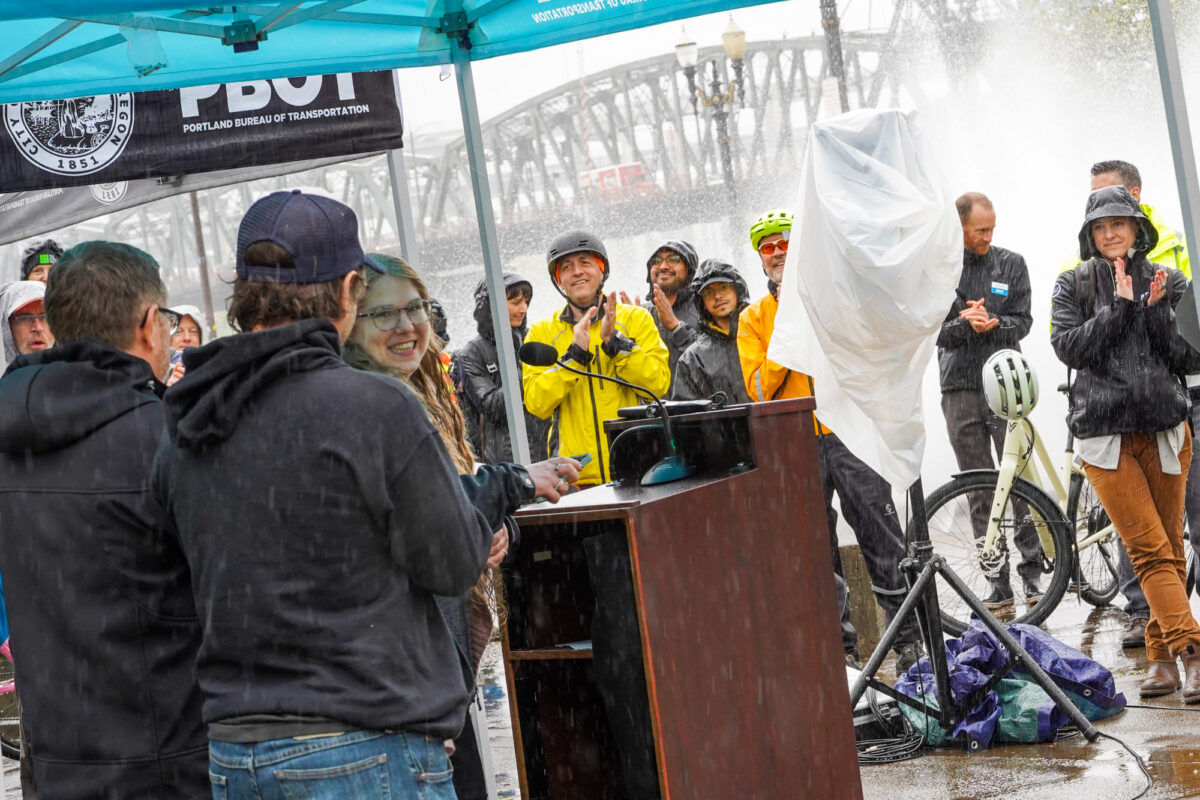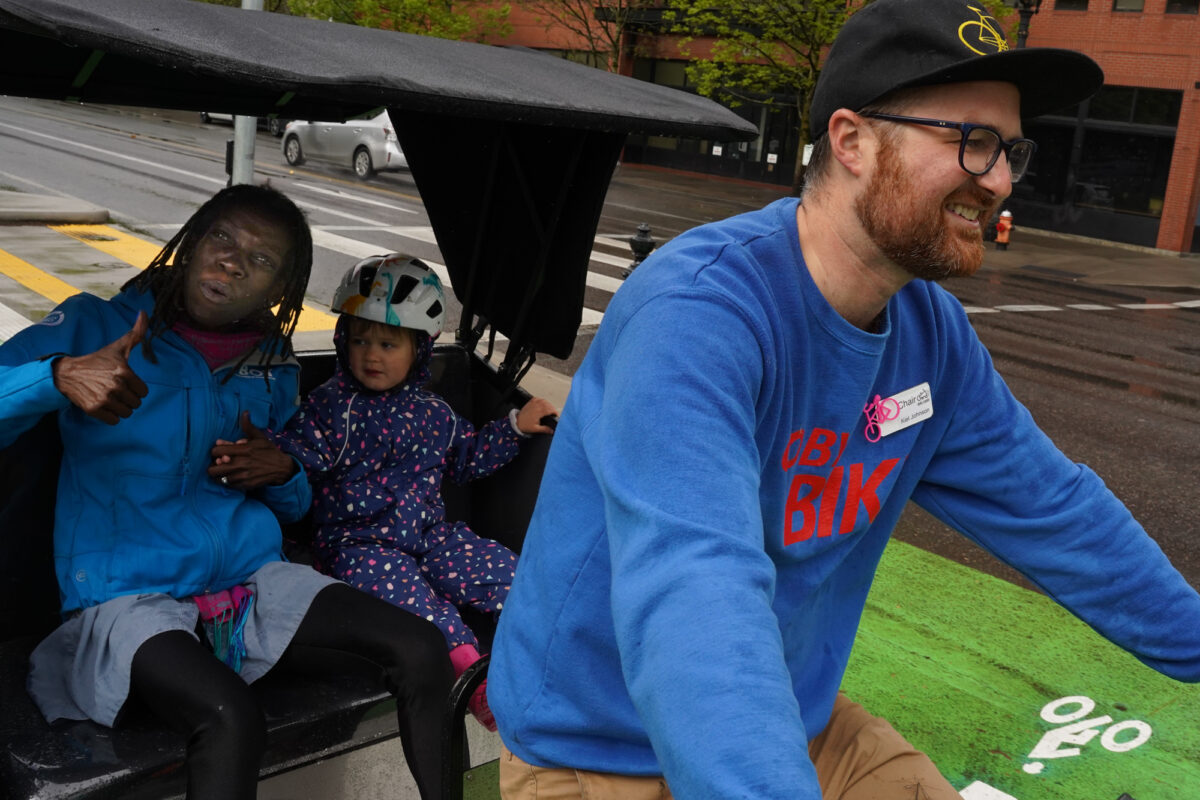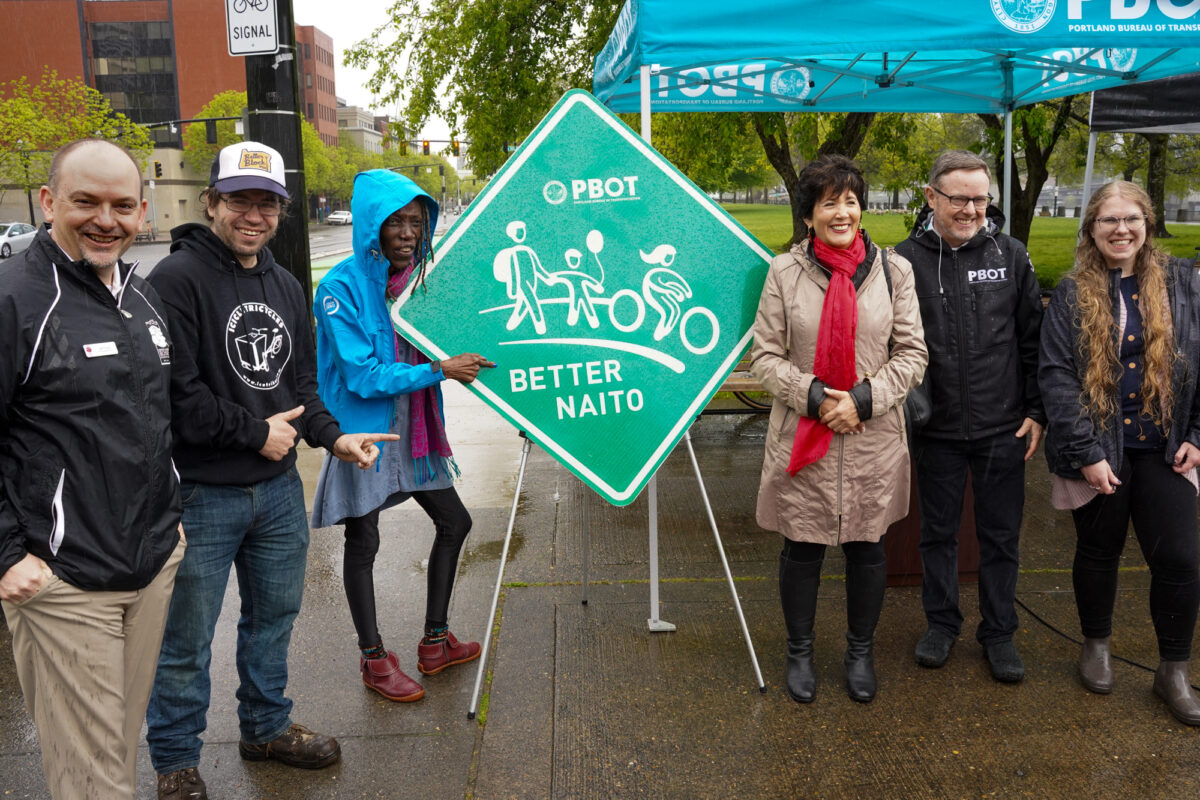
(Photos: Jonathan Maus/BikePortland)
A linchpin in Portland’s efforts to decarbonize its transportation system officially opened today as city leaders cut the ribbon on Better Naito.
Before we get into the recap of the event… Let’s go back a bit in history and recall how a pie-in-the-sky idea floated by former Mayor Charlie Hales in 2011 to create a bike path along the river from Portland to Astoria, manifested itself as a 1.2 mile addition to our active transportation network.
That seed of an idea from Hales bounced around the head of a young tactical urbanism fan named Timur Ender who became a volunteer with Better Block PDX, a nonprofit that creates temporary demonstration projects to show cities what’s possible on their streets. Ender went on to become a policy advisor for former Portland Bureau of Transportation commissioner Steve Novick. The idea gained more steam when elected officials and agency staffers from around the region did a bike ride on the old, narrow lanes as part of the annual Policymakers Ride in 2014. A few months after that ride Ender was relaxing on a hay bale with other Better Block volunteers in the middle of a temporary plaza they helped build on SW 3rd and Ankeny.
“That’s where the idea of Better Naito first came up,” Better Block leader Ryan Hashagen said during a speech at the celebration this morning where he credited Ender for connecting activists to City Hall and setting the gears in motion.
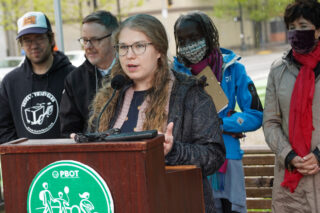
One of those gears was Portland State University’s urban planning school where students had a partnership with Better Block. Former PSU student Gwen Shaw, now a traffic engineer at a local firm, made Better Naito her capstone project. Shaw was there from the beginning. She and her team teamed up with Better Block and PBOT to devise the traffic control plan for the very first iteration of Better Naito that opened on May 22, 2015.
Shaw beamed throughout this morning’s event, hardly able to contain her excitement. “The design is absolutely stunning. It addresses all the things that we never could have done in a temporary fashion.”
Advertisement



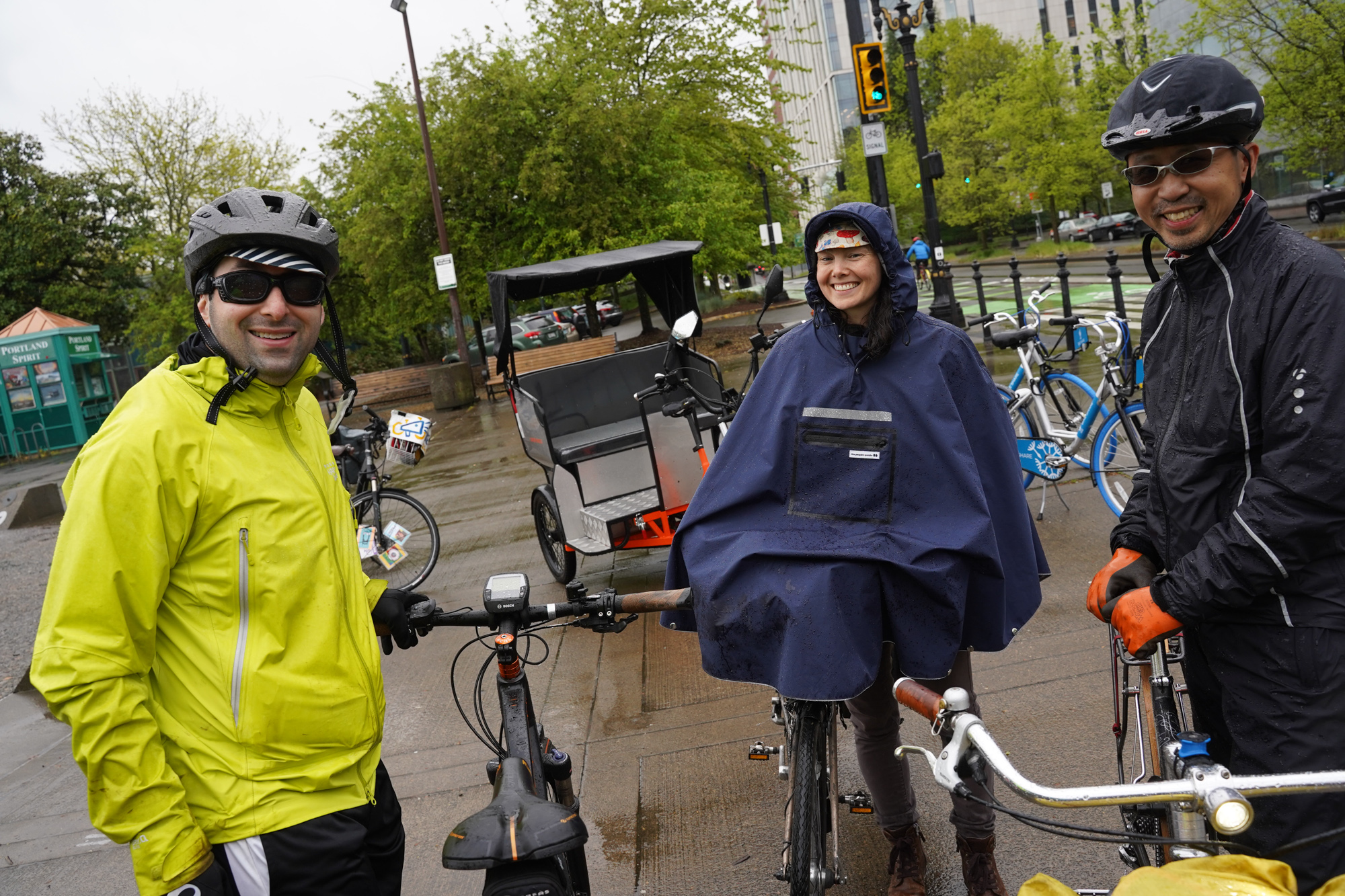
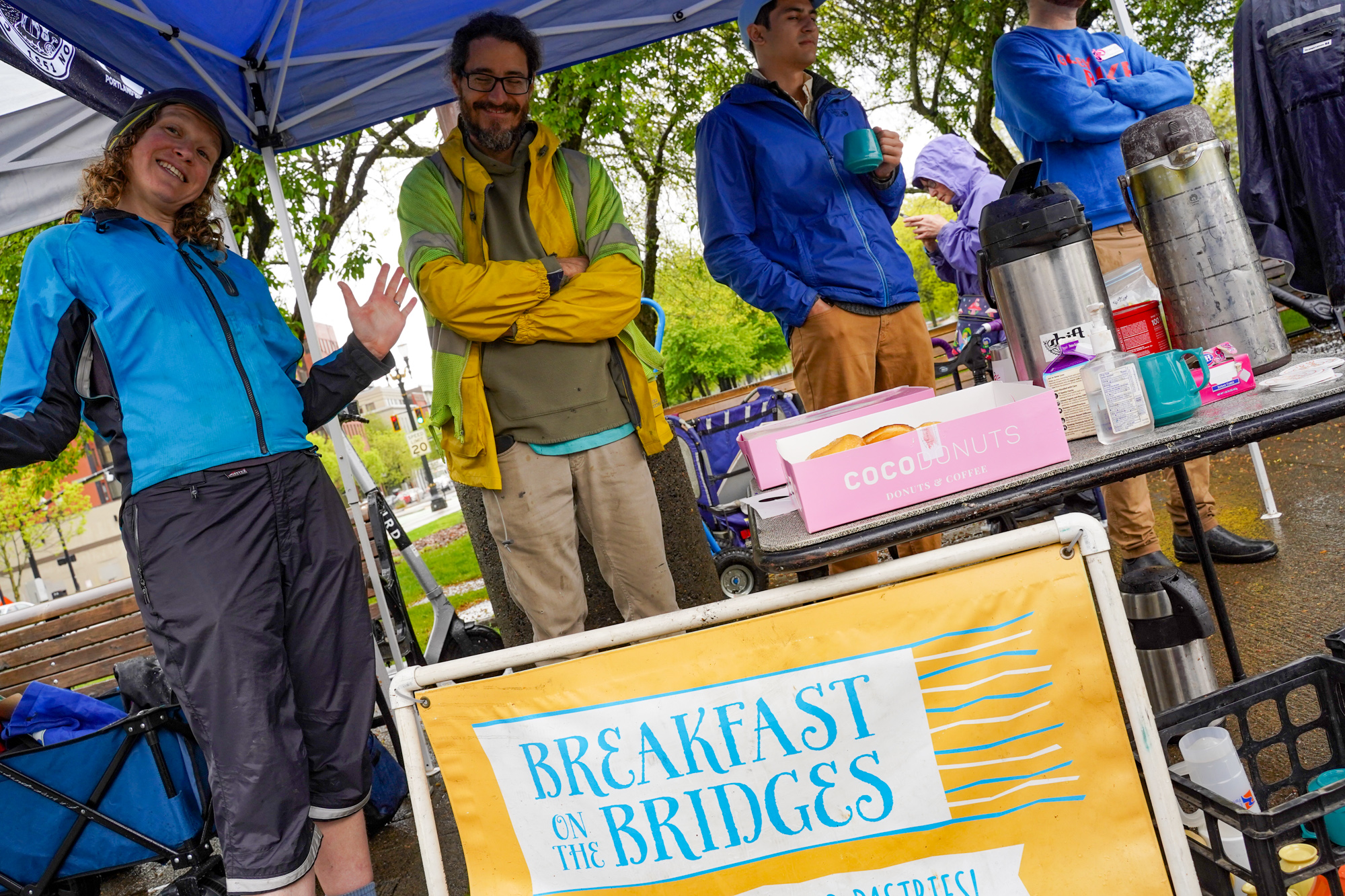
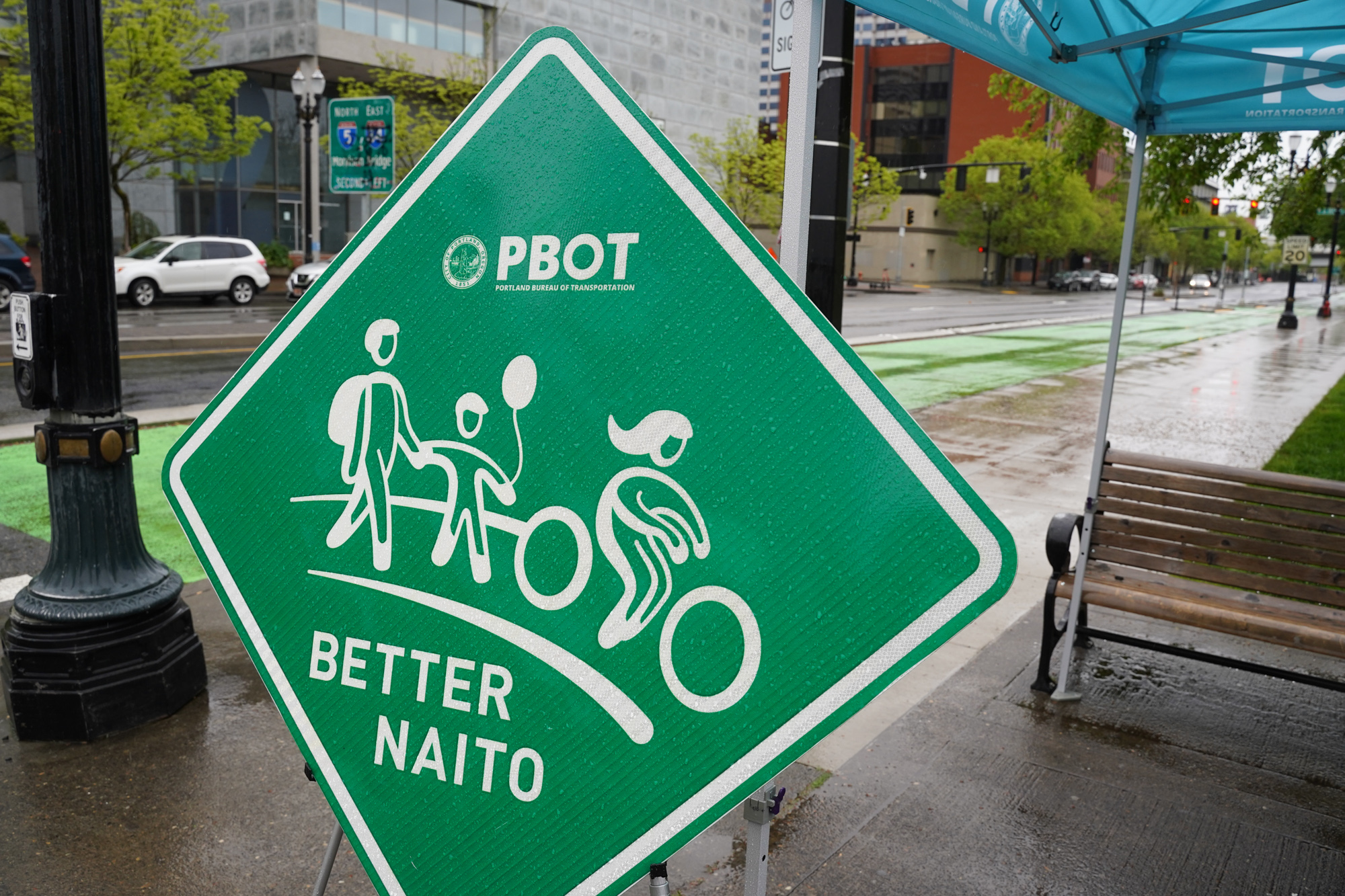



PBOT Director Chris Warner also emphasized how the unorthodox origin of this major capital project not only made it possible, it made it better. “One of the great things about Better Naito was the evolution of how we were able to learn things over the years and receive feedback from the community,” Warner said. “I think it’s made it a much better facility than it might have been if we just would have put it in.” Warner said reducing the space for driving on Naito Parkway and improving access for bikers and walkers adjacent to Waterfront Park, is imperative to meeting their goals and to preparing downtown for the return of office workers.
Asked how he responds to people concerned that there’s less room for the increasing number of car drivers in the region, Warner said, “There might be more cars, but more than ever there’s a need to create a multimodal system that works for everyone. And we just have to keep pushing along and making the case and if the facilities aren’t safe, people aren’t going to ride. The safer the facilities are, the more ability we’ll have to really change the culture.”
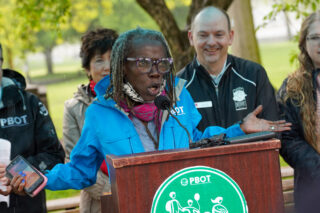
Warner’s boss, PBOT Commissioner Jo Ann Hardesty, said this project is about much more than concrete and curbs:
“As we continue to build and grow our city’s network of safe and friendly places to walk and bike — not just downtown, but in every part of our city — I will think about moments like today, where we all came together, no matter how we move, and enjoy this space as one Portland. Because that’s really what Portland is about. We want to open up our streets, our communities and our hearts to everyone. Because we know we are better when we do. It’s what we need to help us heal from these traumatic last few years… Today’s a celebration of what community can accomplish when we come together.”
Hardesty also reminded the crowd that May is Asian American and Pacific Islander Heritage Month and how Naito Parkway was named after William Naito, a Japanese immigrant who helped revitalize Old Town, downtown and Montgomery Park in the 1970s, 80s, and 90s. “Without the Naito family, it’s hard to imagine what Portland would be like today,” Hardesty said.
After the ribbon was cut Hardesty jumped into a pedicab to try the new lane out for herself. I asked if she felt it would make people safer. “It’s going to be 100 times safer. I just can’t think of a better way to revitalize the city!”
As we rode side-by-side and had a conversation, I recalled how seven years ago this was a dangerous place where drivers would go 35-40 mph and squeeze by us as we clung to the curb. Now it’s calm and there’s plenty of breathing room.
As I looped back I looked up and saw someone in an electric mobility device. It was Cassie Wilson, an activist who’s fought freeway expansions with Youth Vs. ODOT and who was recently hired by The Street Trust. Earlier this morning I asked if she’d taken her scooter on Better Naito. “I’m still a bit intimidated by it,” she said. But with the support of a friend on a bike, Wilson was able to get over those fears and she smiled as she rolled along.
“It’s just exciting to see,” Wilson shared. “It’s exciting to have something to celebrate, instead of fighting against.”



